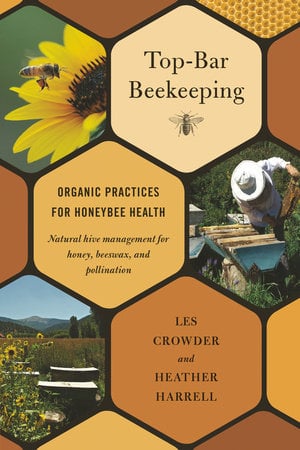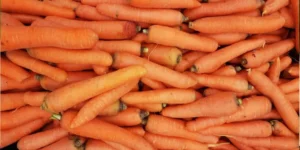Raise Bees in Your Apartment: Urban Apiculture

Not everyone is a fan of bees, but when you get down to their level, you start to appreciate all that they do for us; pollinating the flowers and giving us delicious honey. Beekeeping is a noble profession or hobby to take on as you are providing a habitat for your colony to thrive.
But before you start, there are some crucial things to take into consideration. R. J. Rupenthal explains in his book Fresh Food from Small Spaces the steps you should take before diving into the bee world as well as listing some great resources.
The following is an excerpt from Fresh Food from Small Spaces by R. J. Ruppenthal. It has been adapted for the Web.
I am not a beekeeper. I have known beekeepers. I have watched them look after their bees and have been fortunate that some have shared their knowledge and honey with me. Each time I have tasted raw, local honey, I have wished that I had my own colony of bees. But I guess everything takes time and we need to pick our paths. For now I have my hands full with many of the other pursuits mentioned in this book, not to mention a family and a full-time professional life. But I do hope to try raising my own bees someday, and I hope you will consider it also.
Since I am not an expert, my information comes from books and from others who have raised bees and told me about it. And there are a number of reasons that we should all consider raising bees, which reportedly take less work than other animals you could keep. They also do the world a lot of good by pollinating our plants and trees. And of course they produce delicious honey, which is a valued commodity that you can eat, share, and sell if need be.
Your first step in considering whether to raise bees should be to examine local ordinances and make sure there are no restrictions on keeping bees in your county, city, neighborhood, or building. Bees can be loud and they can sting, so you’ll also need to make sure that no one in your family, nor the immediate neighborhood, has allergies to bee stings. Offering to share some honey the first year with neighbors might mitigate adverse reactions to the idea of your keeping bees.

If you have an outside area that is bordered by a hedge or fence, then this could be a perfect place for a hive, shielding the bees from neighbors’ view. In addition, such a barrier can force bees to fly higher on take-off, minimizing the dangers of human interaction. Beehives do not need to be in full sunlight, and even in cold temperatures, bees work to seal off the hive from wind and they cluster in the center of the structure where their combined body heat can keep the colony going through a cold winter. According to Backyard Beekeeper author Kim Flottum, keeping bees takes more work over the course of a season than keeping a cat, but less work than keeping a dog. That may be an underestimation with the more recent disease problems that have resulted in a honeybee die-off in many regions, but with adequate research and preparation, you can become a successful urban beekeeper even on a small scale.
Keeping bees is a commitment, just like keeping pets. Before taking on such a responsibility, you would be wise to talk to some local beekeepers in your area and perhaps see if you can spend a day with one of them and his/her hives. There are a number of state and local associations across the United States and around the world. The San Francisco Beekeepers Association offers an introductory beekeeping class for both members and nonmembers; for those who do not have space for their own hives, the association also can host your hive for a small fee. The Vermont Beekeepers Association also provides workshops for novices, as well as a mentoring program with experienced beekeepers. A former president, Ross Conrad, wrote the book Natural Beekeeping: Organic Approaches to Modern Apiculture. The Texas Beekeepers’ Association has an extensive network of local affiliates that hold regular meetings and provide support to novices. The Toronto District Beekeepers Association offers prospective beekeepers an opportunity to meet with experienced beekeepers and discuss the craft. (They also hold a honey-tasting competition.) Try searching on the Internet or checking with your local Cooperative Extension agent to see if there is an active beekeeping club in your area that could give you some advice on starting up.
Beginning beekeeping kits, which generally include two hives with eight frames as well as the basic equipment you need to get started, cost in the neighborhood of $215 at Betterbee. Dadant Beekeeping and Golden Bee sell basic kits beginning around $150. If you decide to start with a kit, make sure that it is made of durable materials and that it can accommodate expansion with more frames and hives in the future. And before buying anything, I would advise approaching your local association or a neighborhood beekeeper for some advice on how to get started.
Another reason to start local is that you will, at some point, need some bees. And while you can mail order them, bees do not transport all that well. They can die or get stressed in transit, plus you may not know whether a particular variety is well suited to your region. Getting locally proven and healthy bees from someone in your area, if at all possible, is the way to go. If these are not available or if you need to re-queen, then order from a reputable mail-order source; your local beekeeping group should be able to recommend some. And before getting any bees, it is instructive to take a class or read a beginners’ beekeeping guide such as one of the books mentioned above, that can teach you about the different types of available honeybees and their attributes, advantages, and disadvantages. These include their tendency to swarm or defend the hive as well as their winter cold-hardiness and their proneness or resistance to certain diseases.
Speaking of diseases, the onset of colony collapse disorder (CCD) in many regions of Europe and North America has deservedly received some media attention in the last few years. CCD is a term coined to describe the sudden disappearance of worker bees from a colony, which causes it to collapse suddenly. For reasons that are not entirely understood, more than two-thirds of the managed bee population in North America has died off in the course of the last few seasons following similar reports in Europe. This follows a dramatic decline in our wild honeybee population, which has been a trend for some time. Since at least 30 percent of our world’s fruit and vegetable crops need bee pollination, CCD is an extremely serious issue for humans as well as a cautionary flag for would-be beekeepers. Scientists do not fully understand whether CCD has resulted from pathogens, tracheal or varroa mites, pesticide use, climate change, or other factors. Since bees pick up whatever is out there in our environment, even the small-scale hobbyist beekeeper needs to be proactively prepared to combat mite infestations and disease problems. You owe it to yourself, as well as your future colony of bees, to research your responsibilities fully before taking them on. That being said, there is so much to be gained from beekeeping, and your bees provide such a service to the world around you, that I hope you do strongly consider this noble pursuit.
Recommended Reads
How to Create the Perfect Bee Hive: A Home Worth Buzzing About
Recent Articles
Want to keep growing food during the cold months? Try growing winter carrots in your cold house! These are even sweeter & more flavorful than spring carrots!
Read MoreSearching for the perfect book to give the homesteader in your life? We’ve got your go-to books for anyone interested in organic growing, permaculture, soil health, year-round growing & more! What’s their next great read?
Read MoreWinter is coming… but that doesn’t mean you should put away those tools just yet. Extend the growing season well past the first frost!
Read MoreThe following excerpt is from Grow a New Garden: Plan, design and transform any outdoor space by Becky Searle. It has been adapted for the web. If you’re not a gardener yet, and you have never unashamedly added horse manure to your Christmas list, you might be tempted to skip this chapter. But even if…
Read MoreLiving in a colder climate doesn’t mean you need to give up on more fragile plants. By preparing plants for the winter, you’ll set them up to survive and thrive.
Read More









